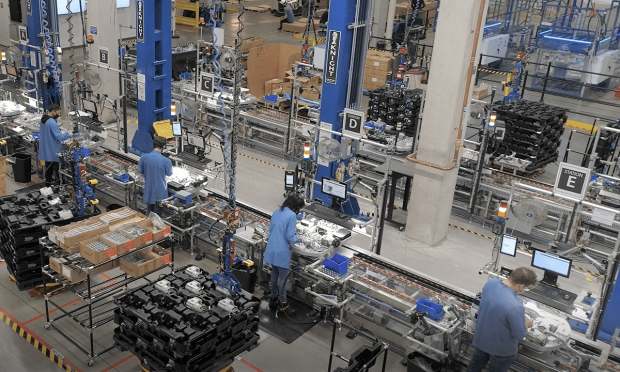Proteus is Amazon’s First Fully Autonomous Mobile Robot

Amazon is now ready to deploy its first fully autonomous mobile robot that was developed to perform its work and automatically move around employees.
Proteus can operate in the same physical space as people without the need for confinement to separate areas, as was the case in the past with other robots. Proteus “augments simple, safe interaction between technology and people” and can lead to a wide range of uses that can help employees, Amazon said in a blog post on Tuesday (June 21).
“Historically, it’s been difficult to safely incorporate robotics in the same physical space as people. We believe Proteus will change that while remaining smart, safe and collaborative,” according to the post.
See also: Amazon Launches $1B Robotics, Logistics Fund
In April, Amazon launched a $1 billion venture fund to support customer fulfillment, logistics and supply chain innovation, PYMNTS reported. The first round of investments targeted wearable technology that enhances safety in fulfillment buildings and robotics “designed to complement and coexist with people’s lives.”
At first, Proteus will be used in Amazon’s fulfillment centers and sort centers for the handling of outbound GoCarts — the non-automated, wheeled transports used to move packages through the facilities. The company said in the post that it plans to automate all GoCart handling throughout Amazon, which will reduce the amount of manual labor on employees.
Read more: Restaurants Turn to Robotics to Fulfill Delivery Demand
Amazon also is getting ready to launch the robotic work cell Cardinal, which uses artificial intelligence (AI) and computer vision to read and select the right package and place it in a GoCart. Cardinal reduces employees’ lifting and turning tasks involving heavy packages or confined spaces.
Manual scanning will soon be replaced by Amazon Robotics Identification (AR ID), an AI-powered scanning capability with computer vision and machine learning technology. The technology uses a unique camera system that runs at 120 frames per second.
Amazon has more than 520,000 robotic drive units and added over a million jobs worldwide. The company also has over a dozen other types of robotic systems in facilities around the world, including sort centers and air hubs, according to the release.
